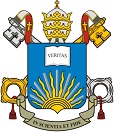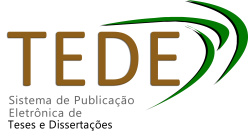| Compartilhamento |


|
Use este identificador para citar ou linkar para este item:
http://tede2.pucgoias.edu.br:8080/handle/tede/2590Registro completo de metadados
| Campo DC | Valor | Idioma |
|---|---|---|
| dc.creator | Dias, Alesandra Martins | - |
| dc.creator.Lattes | http://lattes.cnpq.br/4555336353286437 | por |
| dc.contributor.advisor1 | Tejerina-garro, Francisco Leonardo | - |
| dc.contributor.advisor1Lattes | http://lattes.cnpq.br/6719234350740061 | por |
| dc.contributor.referee1 | Casatti, Lilian | - |
| dc.contributor.referee1Lattes | http://lattes.cnpq.br/8041011456158217 | por |
| dc.contributor.referee2 | Silva, Adélia Maria Lima | - |
| dc.contributor.referee2Lattes | http://lattes.cnpq.br/4119056886162771 | por |
| dc.date.accessioned | 2016-08-10T10:45:10Z | - |
| dc.date.available | 2015-02-02 | - |
| dc.date.issued | 2008-08-18 | - |
| dc.identifier.citation | DIAS, Alesandra Martins. ICTIOFAUNA, CONSERVAÇÃO E INTERFERÊNCIAS ANTROPOGÊNICAS EM RIACHOS DO ALTO DA BACIA DO RIO PARANÁ EM GOIÁS, REGIÃO CENTROOESTE. 2008. 86 f. Dissertação (Mestrado em Ciências Exatas e da Terra) - Pontifícia Universidade Católica de Goiás, GOIÂNIA, 2008. | por |
| dc.identifier.uri | http://localhost:8080/tede/handle/tede/2590 | - |
| dc.description.resumo | A sub-bacia do ribeirão João Leite faz parte do alto da bacia do rio Paraná no sudoeste do estado de Goiás. Este ribeirão nasce no município de Ouro Verde e deságua no rio Meia Ponte, abrigando cerca de 1.600.000 habitantes distribuídos em sete municípios goianos. Este estudo objetiva: i) comparar a ictiofauna de quatro riachos localizados numa unidade de conservação (Parque Ecológico Altamiro de Moura Pacheco) com a de seis riachos presentes em áreas não preservadas da bacia em estudo e ii) determinar a interação peixe-ambiente considerando sete parâmetros ambientais em 24 riachos da sub-bacia do ribeirão João Leite. A coleta da ictiofauna foi realizada no período da estiagem utilizando-se a pesca elétrica em trechos de 50 m, sendo que os parâmetros ambientais foram medidos com equipamentos portáteis (pH, condutividade, turbidez) e através de imagens de satélite (tamanho da área de drenagem, de pastagens, solo exposto ou áreas urbanas e da cobertura vegetal). A comparação da ictiofauna deu-se através de uma análise de agrupamento seguida de um índice de Morisita-Horn. A qualidade do ambiente aquático foi avaliada utilizando-se o método de curvas ABC , enquanto que a relação peixe-ambiente foi determinada através de uma análise de regressão múltipla tipo stepwise. Os riachos preservados apresentam a média da riqueza maior do que esta em riachos não preservados, porém em ambos os casos as assembléias sofrem influência de perturbações naturais ou antropogênicas. A análise multivariada de regressão indica que dos sete parâmetros analisados, somente o pH e cobertura vegetal da bacia estruturam a ictiofauna do ribeirão João Leite e estão relacionadas às modificações da paisagem de origem antrópica presentes na bacia em estudo. | por |
| dc.description.abstract | This study was conducted in the basin of the João Leite River, which integrates the high Paraná River basin in the southwest of the Goiás State. This river has origin in the Ouro Verde county and it empties in the Meia Ponte River, its basin shelter about 1.600.000 inhabitants distributed in seven counties. The weather is classified as hot and sub-humid with four or five dry months. The predominant covering vegetation is the Cerrado, a savanna vegetation type. This study aims to i) compare the fish assemblages of four creeks located into a conservation unit (Altamiro de Moura Pacheco Ecological State Park) with this of six creeks presents in not preserved areas in the same basin; and ii) determine the fish-environment interaction considering 24 creeks of the sub-basin of the River João Leite. Fish sampling was carried through in the low water period using electric fishing in stretches of 50m, where the environmental parameters were measured with portable equipment (pH, conductivity, turbidity) and through satellite s images (size of the drainage, grazing, urban and covering vegetation areas). The comparison of fish assemblages was given through a cluster analysis followed by a Morisita-Horn index, and the quality of the aquatic environment was evaluated by the method of ABC curves , whereas the relation fish-environment was determined by multiple regression analysis, method stepwise. The preserved creeks present a richness average bigger than this in creeks not preserved, but in both the assemblages suffer influence of natural or anthropogenic disturbances. The multiple regression analysis indicates that of the seven parameters analyzed, only the pH and covering vegetation of the basin structure the ichthyofauna of the creeks and is related to the changes of the landscape of anthropic origin in this studied basin. | eng |
| dc.description.provenance | Made available in DSpace on 2016-08-10T10:45:10Z (GMT). No. of bitstreams: 1 ALESANDRA MARTINS DIAS.pdf: 2070475 bytes, checksum: 9cb727e03fa9ee325a8c09b309b99cb5 (MD5) Previous issue date: 2008-08-18 | eng |
| dc.format | application/pdf | por |
| dc.thumbnail.url | http://localhost:8080/tede/retrieve/8303/ALESANDRA%20MARTINS%20DIAS.pdf.jpg | * |
| dc.language | por | por |
| dc.publisher | Pontifícia Universidade Católica de Goiás | por |
| dc.publisher.department | Ciências Exatas e da Terra | por |
| dc.publisher.country | BR | por |
| dc.publisher.initials | PUC Goiás | por |
| dc.publisher.program | Ecologia e Produção Sustentável | por |
| dc.rights | Acesso Aberto | por |
| dc.subject | ribeirão João Leite | por |
| dc.subject | bioma Cerrado | por |
| dc.subject | pesca elétrica | por |
| dc.subject | peixes neotropicais | por |
| dc.subject | João Leite River | eng |
| dc.subject | Cerrado biome | eng |
| dc.subject | electric fishing | eng |
| dc.subject | neotropical fishes | eng |
| dc.subject.cnpq | CNPQ::CIENCIAS BIOLOGICAS::ECOLOGIA::ECOLOGIA APLICADA | por |
| dc.title | ICTIOFAUNA, CONSERVAÇÃO E INTERFERÊNCIAS ANTROPOGÊNICAS EM RIACHOS DO ALTO DA BACIA DO RIO PARANÁ EM GOIÁS, REGIÃO CENTROOESTE | por |
| dc.type | Dissertação | por |
| Aparece nas coleções: | Mestrado em Ecologia e Produção Sustentável | |
Arquivos associados a este item:
| Arquivo | Descrição | Tamanho | Formato | |
|---|---|---|---|---|
| ALESANDRA MARTINS DIAS.pdf | 2,02 MB | Adobe PDF |  Baixar/Abrir Pré-Visualizar |
Os itens no repositório estão protegidos por copyright, com todos os direitos reservados, salvo quando é indicado o contrário.




